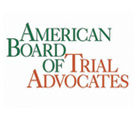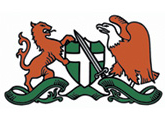Pedestrian laws in California emphasize the rights and responsibilities of those traveling on foot. Crosswalks, whether marked or unmarked, serve as designated areas for pedestrians to safely cross the road. Here is a list of some key vehicle codes relevant to pedestrian and crosswalk laws in the state.
California VC 467 (Important Definitions)
According to VC 467, a pedestrian is defined as "any person who is on foot or using any means of conveyance propelled by human power, other than a bicycle." This broad definition encompasses individuals moving on foot, whether walking, running, or using mobility aids such as crutches or walkers.
Exclusions
The definition excludes individuals on bicycles. Bicyclists, while using human power for propulsion, fall under a distinct category in California traffic laws.
Wheelchair Users
It's important to note that individuals using wheelchairs are considered pedestrians under VC 467. This acknowledgment underscores the state's commitment to accommodating various forms of human-powered conveyance for those with mobility challenges.
Implications for Road Users
Recognizing who falls under the pedestrian category is fundamental to understanding their rights on the road. Pedestrians have the right of way in marked and unmarked crosswalks, and drivers must yield to them to ensure safe passage.
Responsibilities
Understanding the legal definition of a pedestrian is equally vital for those on foot. Pedestrians must adhere to traffic and crosswalk signals, exercise due care, and avoid sudden movements into the path of oncoming traffic.
Safety considerations
The definition of a pedestrian extends beyond mere legal terminology; it reflects a commitment to road safety for all road users. This inclusivity encourages a shared responsibility among motorists and pedestrians to create a safer environment on California's streets.
Additional Key Definitions Under VC 467
By defining terms such as "motor vehicle," "intersection," "sidewalk," and "highway," VC 467 sets the stage for the application of specific regulations. These definitions, in turn, guide the principles that govern right-of-way, traffic control, and the conduct of drivers and pedestrians.
Motor Vehicle
VC 467 clearly outlines what falls under the classification of a motor vehicle, a foundational concept for numerous regulations applicable to different types of vehicles on the road.
Intersection
Defining an intersection is critical for establishing rules related to right-of-way and traffic control. VC 467 provides the necessary parameters for these crucial regulations.
Sidewalk
The definition of a sidewalk influences the rights and responsibilities of pedestrians in these designated areas, shaping safety protocols in these spaces.
Highway
The parameters set for what qualifies as a highway influence the application of regulations governing these thoroughfares.
California VC 275
VC 275 provides a formal definition of a crosswalk, describing it as either:
- Marked Crosswalks — In cases where crosswalks are marked with painted lines, the boundaries are visually defined. These designated spaces signal both pedestrians and drivers that this area is intended for safe pedestrian crossings.
- Unmarked Crosswalks — Unmarked crosswalks exist at intersections without painted lines. VC 275 emphasizes the importance of pedestrian rights at these crucial junctures at intersecting roads as a crosswalk.
Implications for Road Users
Understanding the definition of a crosswalk is essential to recognizing where pedestrians hold the right of way. Whether marked or unmarked, these designated areas signal to drivers that pedestrians have a legal right to cross.
For drivers, VC 275 serves as a guide to identify and respect crosswalks. Whether painted or inferred, these areas require drivers to yield to pedestrians within or approaching these defined spaces.
California VC 21966 (Prohibiting Entry into Bike Lanes)
VC 21966 prohibits pedestrians from entering bike lanes. This provision acknowledges the distinct needs and vulnerabilities of both cyclists and pedestrians, aiming to prevent potential conflicts that may arise when these modes of transportation share the same space. Bike lanes are designated spaces for cyclists to navigate efficiently and without unnecessary obstructions.
California VC 21955 (California's Pedestrian Crosswalk Mandate)
VC 21955 lays out a clear mandate for pedestrians approaching or within an intersection. According to this provision, pedestrians must use crosswalks at intersections, emphasizing the significance of designated spaces for safe crossings.
Crosswalk Utilization
The provision encourages pedestrians to utilize crosswalks, whether marked or unmarked, to traverse intersections. This requirement contributes to the predictability of pedestrian movements and facilitates a smoother flow of both pedestrian and vehicular traffic.
Drivers can anticipate that pedestrians will use crosswalks at intersections, as mandated by VC 21955. This expectation allows drivers to approach intersections with caution and preparedness for potential pedestrian crossings. VC 21955 also reinforces the shared responsibility between pedestrians and drivers in creating a safe environment at intersections.
California VC 21456 (Understanding California's Crossing Light Regulations)
VC 21456 underscores the importance of pedestrians adhering to pedestrian signals, including "walk" and "don't walk" indicators. These signals are designed to regulate the safe movement of pedestrians across roadways and are typically accompanied by illuminated symbols or countdown timers.
"Walk" Signal Guidelines
Pedestrians are expected to use the crosswalk only when the "walk" signal is displayed. This indicates that it is a safe time to cross, and pedestrians can proceed across the intersection.
"Don't Walk" Signal Guidelines
When the "don't walk" signal is illuminated, pedestrians are prohibited from entering the crosswalk. This phase of the signal indicates that it is not safe to cross, and pedestrians should wait on the sidewalk until the signal changes.
Completion of Crossing
Pedestrians who have already started crossing when the "don't walk" signal is displayed are allowed to complete their crossing to the other side of the roadway. However, they should do so promptly and not enter the crosswalk if they have not already started.
California VC 21954 (Understanding Pedestrian Crossings Beyond Crosswalks)
VC 21954 acknowledges that pedestrians might need to cross streets outside of marked or unmarked crosswalks. However, this provision establishes specific conditions under which such crossings are permissible.
Prohibiting Interference with Traffic
Pedestrians are permitted to cross outside of crosswalks only if they do not impede the flow of vehicular traffic. VC 21954 emphasizes the importance of pedestrians crossing efficiently and without causing unnecessary disruptions to the orderly movement of vehicles.
Pedestrians crossing outside of crosswalks must yield the right of way to oncoming vehicles. While pedestrians have certain rights, VC 21954 underscores the shared responsibility for safety, emphasizing the need for cooperation between pedestrians and drivers.
Crossing at Right Angles
Pedestrians are encouraged to cross roadways at right angles to the curb whenever possible. This approach minimizes the time spent in the roadway, reduces the risk of accidents, and enhances visibility for both pedestrians and drivers.
VC 21970 (California's Regulations on Blocking Crosswalks and Sidewalks)
VC 21970 prohibits drivers from stopping their vehicles in a manner that obstructs a marked or unmarked crosswalk, as well as any portion of a sidewalk. The provision is designed to ensure unimpeded pathways for pedestrians, emphasizing the need for drivers to be mindful of their parking or stopping choices in areas designated for pedestrian use.
Exceptions for Traffic Control Devices
While the general rule is strict regarding blocking crosswalks and sidewalks, drivers may temporarily stop in these areas when complying with traffic control devices, such as signals or signs.
Mindful Parking Choice
Drivers are encouraged to make parking and stopping choices with consideration for pedestrians. VC 21970 underscores the importance of avoiding obstruction of crosswalks and sidewalks to maintain safe and accessible pathways for pedestrians.
Compliance with Traffic Control Devices
Drivers should adhere to traffic control devices that may allow temporary stopping in these areas. However, it is crucial to interpret and follow such signals or signs accurately.
California VC 21952
VC 21952 establishes a clear mandate regarding the right-of-way at sidewalk crossings. Pedestrians within or approaching a sidewalk, whether marked or unmarked, have the right-of-way over vehicles intending to cross these pathways.
Drivers are obligated to yield to pedestrians when crossing or intending to cross a sidewalk. This rule applies to both marked and unmarked crosswalks, emphasizing the importance of prioritizing pedestrian safety.
Shared Responsibility
VC 21952 reinforces the shared responsibility for safety between pedestrians and drivers. While pedestrians enjoy the right-of-way, they should also exercise caution and not enter the crosswalk when it is unsafe to do so.
California VC 21963 (Identification Canes or Guides)
VC 21963 emphasizes the significance of two key tools for visually impaired individuals - white canes and guide dogs. These aids serve as identification devices, signaling to others that an individual has a visual impairment and may require additional assistance.
Visual Cue for Drivers
The white cane, typically white or reflective, is an internationally recognized symbol of visual impairment. Its use by pedestrians signals to drivers that extra caution is necessary, promoting an environment of awareness and safety.
Guide Dogs as Navigational Assistants
For those with guide dogs, VC 21963 recognizes these specially trained animals as indispensable companions providing essential navigational assistance. Guide dogs are trained to guide their handlers safely through various environments, including road crossings.
Drivers are expected to exercise special consideration when encountering pedestrians with white canes or guide dogs. Awareness of these identifying tools signals the need for heightened caution and accommodation.
California VC 21964 (Priority at Intersections)
VC 21964 unequivocally establishes that blind pedestrians using white canes or guide dogs have the unconditional right-of-way at intersections. This means that, regardless of conflicting traffic signals or signs, visually impaired individuals take precedence when crossing the roadway.
Ensuring Safe Passage
The provision aims to ensure the safe passage of visually impaired pedestrians through intersections, recognizing the challenges they face in navigating complex traffic environments.
Accommodating Visual Impairments
VC 21964 reflects a commitment to accommodating the unique needs of individuals with visual impairments, acknowledging their reliance on auditory cues, tactile feedback, and guide animals for safe navigation.
Drivers are legally obligated to yield the right-of-way to blind pedestrians at intersections. This rule emphasizes the importance of creating a safe space for those with visual impairments to navigate roadways confidently.
California VC 21965 (Unlawful to Interfere)
VC 21965 explicitly makes it unlawful for anyone to willfully interfere with or attempt to interfere with a blind pedestrian using a guide dog or white cane. This prohibition aims to protect visually impaired individuals from intentional disruption or harm.
Safeguarding Right-of-Way
The provision emphasizes the importance of safeguarding the right-of-way for blind pedestrians, acknowledging the unique challenges they face in navigating public spaces and roadways.
Drivers are reminded of their duty to facilitate the safe passage of visually impaired pedestrians using identification canes or guide dogs. VC 21965 reinforces the need for drivers to exercise caution and contribute to a road culture that prioritizes the safety and rights of all pedestrians.
The provision encourages drivers to be particularly aware of visually impaired individuals in their vicinity. Intentional interference is not only a violation of the law but also goes against the principles of road safety and shared responsibility.
Legal Consequences
Violating VC 21965 can result in legal consequences for individuals who intentionally interfere with blind pedestrians using identification canes or guide dogs. Law enforcement is empowered to enforce this provision to maintain a safe and inclusive road culture.
How can Pedestrian and Crosswalk Laws in California impact a lawsuit in pedestrian accidents?
Pedestrian and crosswalk laws in California play a significant role in shaping the legal landscape when it comes to pedestrian accidents and lawsuits. Here are some ways in which pedestrian and crosswalk laws in California can impact a lawsuit:
Establishing Fault
- Driver's Duty to Yield (VC 21950) — If a driver fails to yield the right-of-way to a pedestrian within a crosswalk, the driver may be deemed at fault in a lawsuit. VC 21950 establishes the duty of drivers to exercise caution and yield to pedestrians lawfully within a crosswalk.
- Pedestrian Crossing Outside Crosswalks (VC 21954) — When a pedestrian is involved in an accident while crossing outside a crosswalk, compliance with VC 21954 becomes crucial. If the pedestrian followed the conditions outlined in this law, they may have a stronger argument in their favor.
Pedestrian's Responsibilities
- Crossing Efficiently (VC 21950, VC 21954) — Pedestrians are expected to cross roads efficiently and not unnecessarily impede vehicular traffic. Adhering to these responsibilities can impact the determination of fault in a lawsuit.
- Use of Crosswalks at Intersections (VC 21950, VC 21955) — Pedestrians are required to use crosswalks at intersections. Failure to use crosswalks when available might impact a pedestrian's legal standing in a lawsuit.
Special Rules for Blind Pedestrians (VC 21963-65)
- Right-of-Way at Intersections (VC 21964) — In accidents involving blind pedestrians, VC 21964 grants unconditional right-of-way. Violating this provision could heavily influence the determination of fault in favor of the visually impaired pedestrian.
- Prohibiting Interference (VC 21965) — Intentional interference with a blind pedestrian is unlawful. If a pedestrian crash involves intentional interference, it can significantly impact the legal proceedings.
Driver Accountability
- Blocking Crosswalks (VC 21970) — If a driver stops in a way that obstructs a crosswalk, it may be considered a violation of VC 21970. This violation could impact the assessment of fault in a lawsuit, especially if it contributes to the accident.
- Yielding to Pedestrians (Various Sections) — Failure to yield to pedestrians as required by law may result in the driver being held accountable in a lawsuit.
Intersection Signals (VC 21456)
- Pedestrian Signal Adherence — Adherence to pedestrian signals at crosswalks (VC 21456) is crucial. Failure to comply may affect the legal standing of both pedestrians and drivers in the event of an accident at a signalized crosswalk.
Comparative Negligence
- Pedestrian's Actions — California follows a comparative negligence system, meaning that the actions of both the pedestrian and the driver are considered. If a pedestrian is found to have contributed to the accident by violating pedestrian laws, their recovery in a lawsuit may be reduced.
Witness Testimonies and Evidence
- Impact on Credibility — Adherence or non-adherence to pedestrian and crosswalk laws may impact the credibility of witnesses and the strength of evidence presented during a lawsuit.
Compensation Available to Victims of Pedestrian Accidents in California
Pedestrian accidents can result in severe physical, emotional, and financial consequences for the individuals involved. Below are the various forms of compensation that may be available to victims of pedestrian accidents in California.
Medical Expenses
One of the primary forms of compensation for victims of pedestrian accidents is coverage for medical expenses. This includes current and future medical bills related to the accident, such as hospital stays, surgeries, prescription medications, rehabilitation, and any necessary ongoing medical care.
Lost Wages and Future Earning Capacity
If the pedestrian sustains injuries that result in missed work or a diminished ability to earn in the future, compensation may be available for lost wages and the impairment of future earning capacity. This encompasses both the immediate impact on income and potential long-term financial losses.
Wrongful Death Damages
In tragic cases where a pedestrian loses their life due to an accident, surviving family members may be eligible for wrongful death damages. This can include compensation for funeral expenses, loss of financial support, and the emotional toll on surviving family members.
Other compensations include:
- Insurance Coverage.
- Punitive Damages.
- Legal Fees.
- Rehabilitation and Therapy.
- Costs Property Damage.
Find a Personal Injury Attorney Near Me
If you or a loved one is involved in a pedestrian crash, you may consider reaching out to our experienced attorneys at Los Angeles Car Accident Attorney. We stand ready to provide you with the support and expertise necessary to navigate the complexities of personal injury law in California. Contact us today at 424-237-3600.






